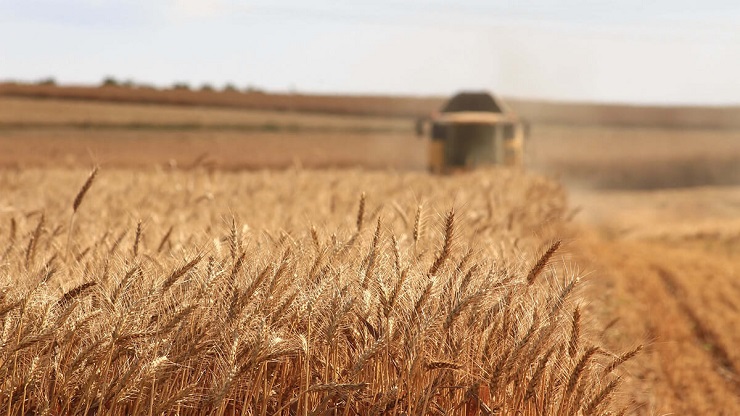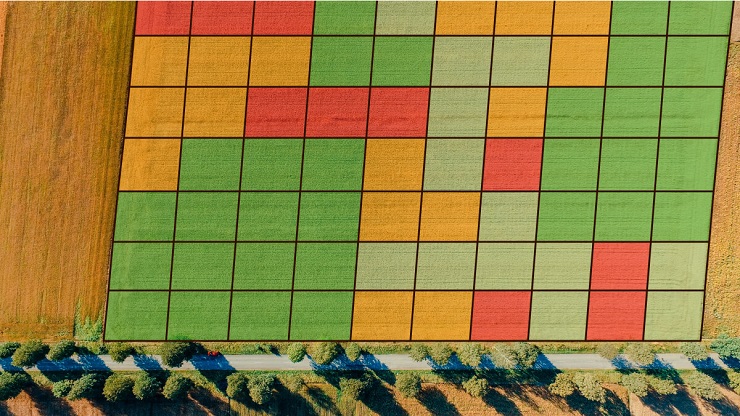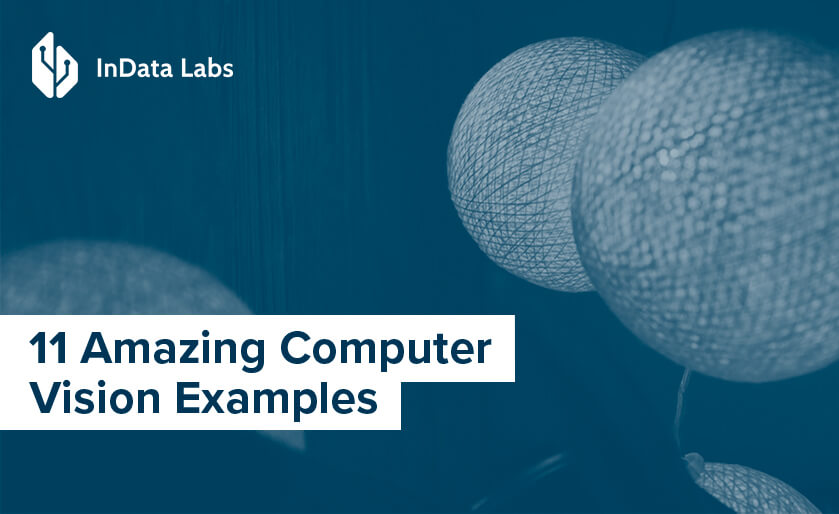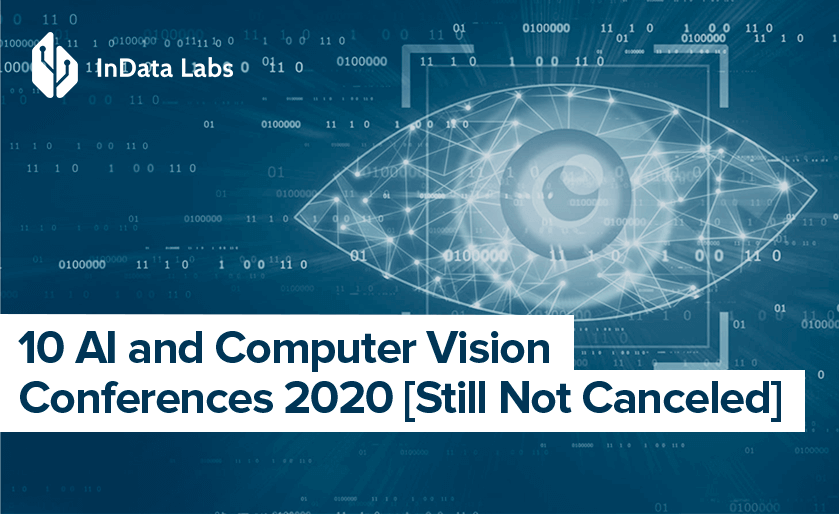The maturation of Artificial Intelligence and agriculture computer vision are disrupting the AgTech Sector. And for a good reason.
AI-based vision propels farmers to before unattainable levels. Today, labor costs are skyscraper-high and competition is neck-breaking. But the legacy of farming is safe with AI vision systems. The proliferation of computers in agriculture is far-reaching. Thus, the global AI market is soon to grow to around $2,075 million by 2024.
We’ve decided to follow up on this tendency. Today, we’re diving into the most recognized applications of computer vision in agriculture.
But first, how does computer vision work in agriculture?
Computers In Agriculture: No Longer A Sci-Fi Concept
Agriculture has always been one of those underestimated low-tech sectors. But today, smart AgTech is beefing up the global economies. This unexpected overhaul stems from the advancement of machine learning and computer vision. Hence, AI computer vision for agriculture is a mandate to stay ahead of the competition by improving productivity and quality of the products.
With that said, this is how computer vision technology works in the Agri sector. The phenomenon denotes computers that derive insights from visual data. It inherits the process of human visual capabilities. Yet, this technology needs a camera and computer to identify, scan and assess targets. Machine learning and Deep Learning also help train computer vision-based AI models. They make the subject of interest recognizable to machines for further analysis.

Source: Unsplash
Today, agriculture computer vision propels plant growth and game-changing developments. Data-driven predictive decision-making allows for the robust performance of agricultural automation systems. It also brings us closer to a brighter future of AgTech, and, specifically, computer vision applications in agriculture.
Why Traditional Methods Are Not Enough
Computer vision for agriculture evinces the ineffectiveness of classical inspection methods. Let us explain why.
The current systems depend on manned operations. This fact is accountable for a great number of challenges, including:
- Improper nutrient measurements
Improving nutrition outcomes is the ultimate necessity in farming. But manual analysis falls short of determining the nutritional requirements of every crop. Thus, investment prioritization and decision-making are impossible without automatization.
- Time-consuming
Traditional agroecosystems need labor-intensive manual input. Selection and breeding, for example, are cumbersome if done by hand.
- Requires more financial resources
A larger human workforce incurs higher costs. So, manual operations do not generate much profit.
- Lower returns
The human factor is always present in traditional farming activities. It makes agriculture error-prone, thus resulting in falling profits.
Computer Vision Applications In Agriculture
The farm sector has seen several contributions of agriculture computer vision. In particular, computer vision applications span areas such as planting and harvesting. Weeding and plant health detection are also getting their share of hi-tech.
Let’s delve into some of the most noteworthy contributions of computer vision in agriculture.
Computer Vision For Quality Inspection Of Agricultural Food Products
Agriculture and food computer vision have joined forces to ensure real-time food quality inspection. Moreover, AI technologies allow for a non-destructive assessment approach. It means that inspection systems provide the benefits of reliable examination. In doing so, they need minimal training sample preparation.

Source: Unsplash
Apart from quality control, automation systems show great results in product grading. The data suggests that customers prefer apples with the largest diameter between 75 and 80 mm. But farmers would have to spend lots of hours evaluating a fruit’s size. Hence, computer vision for agriculture is a useful complement in the customer-centered market.
Image-based Plant Disease And Pests Detection
Computers in agriculture are also used to identify crop diseases. To prevent crop losses, tech-savvy farmers perform smartphone-assisted disease diagnoses. This application of computer vision relies on a public dataset.
The training data includes diseased and healthy plant leaves. Then, the specialists train a deep convolutional neural network. The training data helps to identify crop species and diseases if any. So far, the trained model has shown an accuracy of 99.35% on a held-out test set.
Image segmentation and classification techniques are important aspects of disease detection in plants. Those are usually complemented with a genetic algorithm.
The University of Hawaii has made this computer vision application accessible to all users. The educational establishment launched an application called Leaf Doctor in 2014. Now, everyone can perform a quantitative assessment for plant diseases with their smartphone.
Weed Detection
Weed control is one of the core means to improve crop production. But chemical herbicide spraying does more damage than good. Chemical agents often lead to the waste and pollution of farmland. The repercussions are even more grave if splattered full-coverage.
This is when computer vision software comes on stage. Today, the agriculture industry leverages both traditional image-processing methods and Deep Learning-based methods. The two allow farmers to address weed detection problems. The technology allows farmers to tell crops from weeds and achieve precise spraying.
Soil Sampling And Mapping With Drones
Drones or UAVs provide multispectral remote sensing for the composition of the soil. They leverage sophisticated imaging technology and remote sensing cameras. This AI-enabled hardware gathers data on the electromagnetic spectrum of light. The latter gets reflected from the land below.
Thanks to a birds-eye view, farmers can analyze differences in elemental soil composition. The obtained data lays the foundation for the ideal seed planting patterns. Also, it augments fertilizing strategies. Moreover, a drone-based control can capture the alterations in leaf color and stem growth. Drones can even provide precise measurements in cloudy conditions.

Source: Unsplash
A prominent example of UAV-based soil moisture systems is the Monash University project. The project’s mission is to optimize irrigation practices with drone technology. Moreover, it helps reduce the unnecessary use of water.
Livestock Management
Farmers also turn to AI consulting for precision livestock farming. Animals can stay under the care of new intelligent methods. Thus, algorithms get trained to determine the type of animal and its behavior. A well-trained drone can recognize livestock, count and track them with no human help.
AI-powered inspection systems can also gather phenotypic data. The latter includes critical information about animal live weight, pregnancy status, and parentage. All these contribute to improved on-farm profitability and productivity.
Remote monitoring of your herd can also be useful for other purposes. This includes detecting diseases, behavioral changes, or birthing. Besides, intelligent livestock management also helps determine the breeding time and market readiness.
Yield Analysis
A powerful combination of deep learning and AI vision underpins crop yield analysis. The automated process replaces time-consuming manual operations. Besides, it provides farmers with extra data on cluster variation and crop health.
To train the machines, AI specialists collect a broad set of existing data. The latter may include weather conditions, soil factors, and moisture.
Computer Vision in Grading and Sorting of Crops
The post-harvest chain belongs to AI uses as well. It is one of the most interesting computer vision applications in agriculture. There, AI systems are used for sorting and grading harvested produce. In particular, they provide automated inspection of crop quality. The obtained data helps to decide on the products available for longer shipment.
This grade is also used to assign them to different sales channels such as local markets. From a technical standpoint, grading is possible thanks to traditional image processing algorithms. Normalization and equalization algorithms serve to arrange the visual data. It then assists in automatic visual inspection.
Phenotyping
Computers in agriculture also perform plant phenotyping. It is the science that characterizes plants and crops. It is a core field of knowledge for decision support in agriculture. Phenotyping also equips farmers with accurate data to select the most suitable genotypes.
Autonomous phenotyping systems provide opportunities for non-invasive crop diagnostics. The AI systems gather sample images to determine plant features. These include height, width, color, and estimated fruit yield. Thus, agri specialists can track the development and physiological responses of crops. Repositories for pre-trained models also empower next-gen models. The latter establishes new phenotyping frameworks through refinements.
Indoor Farming
Finally, Deep Learning-based models are fast-forwarding indoor farming. Unlike conventional farms, indoor ones are quite expensive in initial setup and maintenance. And intelligent systems help drive down the operating costs. Thus, they help to check the best lighting intensity and temperature. Additionally, inspection systems help track the crops for diseases with no expert input. And performing these tasks by hand will need a lot of human resources.
The Final Word
Artificial Intelligence has proved to amplify a full spectrum of operations. Its broad capabilities are especially gainful for transforming legacy industries like agriculture. Hence, computer vision in agriculture is becoming the backbone of next-gen agronomy.
It means that in the coming years, we’ll be able to face the challenges thrown by mother nature. AI-powered systems also bring us one step closer to a sustainable future. A future where agriculture avails of intelligent automatic guidance.
Strengthen Your Agriculture Business with Computer Vision Technology.
Need computer vision experts to implement solutions to be able to get insights for taking prompt action? Schedule a call with our team to discuss your project and business objectives.



